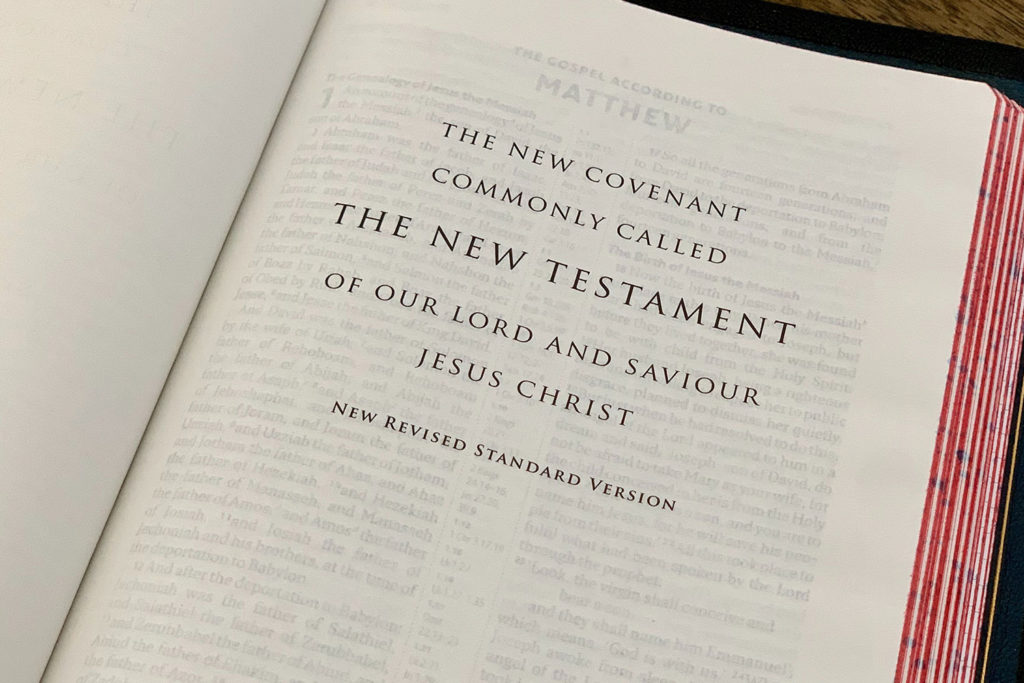By Craig L. Blomberg
Can the major contours of the portraits of Jesus in the New Testament Gospels be trusted? Many critics would argue not. The Jesus Seminar became the best-known collection of such critics during the 1990s as they alleged that only 18 percent of the sayings ascribed to Jesus and 16 percent of his deeds as found in the four canonical Gospels of Matthew, Mark, Luke and John, plus the apocryphal Gospel of Thomas, bore any close relationship to what he actually said and did. At the same time, a much more representative cross-section of scholars from about 1980 to the present has inaugurated what has come to be called the Third Quest of the Historical Jesus, in which a greater optimism is emerging about how much we can know, from the Gospels, read in light of other historical cultural developments of the day. This article rapidly surveys 12 lines of evidence that, cumulatively, support the historical reliability of the Gospels, particularly the Synoptics (Matthew, Mark, and Luke). None of these arguments presupposes Christian faith; all proceed following standard historical approaches of evaluating the credibility of a wide variety of ancient documents.
(1) More so than with any other literary work of antiquity, we can have enormous confidence in reconstructing what the original texts of the Gospels most likely said. While none of the autographs remains, the sheer volume of manuscripts (from tiny fragments to complete New Testaments)-5,000 in ancient Greek alone-far outstrips what we have for any other Jewish, Greek or Roman literature, where historians often consider themselves fortunate to have manuscripts numbering in double figures! The art and science of textual criticism enables scholars to date, classify, compare and contrast these documents where they differ and determine, with 97 to 99 percent accuracy, what the originals most probably contained. With the oldest known fragment of any of the Gospels, a few verses from John 18 dating to around A.D. 125, we are within one generation of that document’s original composition. For most other ancient works, at least several centuries elapse between the originals and the oldest existing copies. None of this makes anything in the Gospels true, but it does mean we know what their writers claimed, something which we are often not at all sure of about other ancient writers.
(2) The authors were in a position to write accurate history if they so chose. Traditional Christian claims affirm that the Gospels were written by two of Jesus’ twelve closest followers (Matthew and John), a third man (Mark) who closely followed the memoirs of Peter, the leader of the Twelve, and a fourth (Luke) who carefully interviewed eyewitnesses of Jesus’ life as well as consulting previously written sources (Luke 1:1-4). More skeptical scholars have often suggested that we should think of anonymous first-century Christians instead, perhaps disciples of the four men mentioned here. But either way, we are at most two removes away from eyewitness information.
(3) Conservative scholars typically date Matthew, Mark and Luke to the 60s and John to the 90s; liberal scholars tend to favor a date for Mark in the 70s, Matthew and Luke in the 80s and John in the 90s. But either way, we are still talking about first-century testimony. Again, compare these last two points with the typical situation for other ancient histories and biographies. The detailed life of Alexander the Great, however, which most historians believe can be reconstructed with a fair amount of accuracy, depends on Arrian and Plutarch’s late first and early second-century biographies of a man who died in 323 B.C.
(4) But were the first two generations of Christians (ca. A.D. 30-100) even interested in preserving historical information? This has often been doubted, primarily for two reasons. First, some argue that the perception of the possibility of Jesus’ quick return to Earth to bring an end to this age as we know it would have precluded any interest in functioning as historians. Who bothers to record history, even of that believed to be sacred, if they think the world might end at any time? Well, Jews, for one, at least since the eighth century B.C! Their prophets had been promising that the “Day of the Lord” was at hand for centuries at yet God’s people also recognized that a day with the Lord was as a thousand years (Psalm. 90:4), so the ordinary course of human events continued. Second, some allege that the ideological (i.e., theological) bias of the Gospels writers would have necessarily distorted the historical facts. There is no doubt that a passionate commitment to a certain ideology can lead some writers to play fast and loose with history, but certain kinds of ideologies actually require greater loyalty to the facts. Jews after World War II, for example, for precisely the reason that they were passionately committed to preventing a Holocaust such as they had experienced under the Nazis from ever happening again, objectively chronicled in detail the atrocities they had suffered. It was less committed people who produced the appalling revisionism that substantially minimized the extent of the Holocaust or even denied it altogether. Because Christian faith depended on Jesus having lived, died and been resurrected according to the biblical claims (1 Cor. 15), the Gospels’ authors would have good reason to tell the story straight.
(5) But could they pull it off? Even just thirty years after historical events, memories can grow dim and distorted. But first-century Judaism was an oral culture, steeped in the educational practice of memorization. Some rabbis had the entire Hebrew Scriptures (the Christian Old Testament) committed to memory. Memorizing and preserving intact the amount of information contained in one Gospel would not have been hard for someone raised in this kind of culture who valued the memories of Jesus’ life and teaching as sacred.
(6) Why then are the Gospels not word-for-word alike? Why was more than one needed in the first place? Moreover, the verbatim similarities among the Synoptics are usually taken as a sign of literary dependence of one Gospel on another or two together on a common source. There are a whole host of reasons for these differences. Many have to do with what each author selected to include or leave out from a much larger body of information of which he was aware (John 21:25). Distinctive theological emphases, unique geographical outlines, and larger questions of literary subgenre account for many of these selections and omissions. But even where the Gospels include versions of the same event, verbatim parallelism usually remains interspersed with considerable freedom to paraphrase, abridge, expand, explain and stylize other portions of the accounts. All this was considered perfectly acceptable by the historiographical standards of the day and would not have been viewed in any as errant. But recent scholarship is also pointing out how the flexibility and patterns in oral storytelling would have accounted for many of the more incidental differences as Christian tradition initially passed these stories on by word of mouth.
(7) Can we even assume, then, that the Gospel writers were trying to write something akin to an ancient history or biography rather than, say, a novel or a tragedy in drama form? Yes, for the closest parallels to Luke’s prologue come in the comparatively accurate writers of history such as Josephus in the Jewish world and Herodotus and Thucydides in the Greek world.
(8) Another pair of arguments pushes the case even further. The so-called “hard sayings” of Jesus suggest that the Gospel writers felt considerable constraint on what they could or could not include. Even though Luke’s version of Jesus’ command to hate father and mother (Luke 14:26) can be explained by its parallel in Matthew (Matt. 10:37), it would have been far easier for Luke simply to omit it altogether and avoid the apparent contradiction with the Mosaic command to honor one’s parents if he had felt free to do so. The same thing can be said of Jesus’ claim not to know the day or hour of his return (Mark 13:32). Numerous embarrassments in the Gospels could have been avoided if their writers had anywhere close to the freedom to tamper with the tradition in the ways that the Jesus Seminar and like-minded writers have alleged they had.
(9) Conversely, the topics that Jesus never addresses in the canonical Gospels further support their accuracy. The debate over whether Gentile adult males in a world without anesthesia-had to be circumcised as a sign that they were keeping the whole Jewish Law en route to becoming Christians threatened to tear the first generation of Christianity wide apart (Gal. 2:1-10; Acts 15). The easiest thing in the world for one of the Gospel writers to have done would have been to quote Jesus’ teaching on the topic-or invent some if they felt free to do so. But no verse anywhere in the canonical Gospels expresses Jesus’ opinion on the role of circumcision among his followers. The same can be said of speaking in tongues, an issue which threatened to blow the Corinthian church sky high (see 1 Cor. 12-14) 25 years after Jesus’ death.
(10) A dozen or so non-Christian writers or texts confirm a remarkable number of details in the Gospels about Jesus’ life-that he was a Jew living in the first third of the first century, born out of wedlock, a self-styled teacher who became very popular, selected certain men as his inner core of disciples, disregarded Jewish dietary laws and ate with the despised, enraged certain Jewish leaders, even though believed to be the Messiah by others, was crucified by Pontius Pilate but believed to have been raised from the dead by some of his followers who began a fledgling religion that never died out. Some might argue that this does not seem like a lot of detail but in a world in which almost all historical and biographical writing focused on kings, emperors, military generals, people in institutional positions of religious power, famous philosophers whose “schools” had long outlived them, and, more generally, the well-to-do and influential, it is remarkable that Jesus gets mentioned at all by first-through-third century non-Christian writers. Before the legalization of Christianity in the fourth century, who would have expected this obscure, crucified rabbi to produce a following that would one day become the religion adopted by the greatest percentage of people on earth?
(11) Archaeology confirms a whole raft of details susceptible to artifactual or epigraphic corroboration-the existence of the pools of Siloam and Bethesda in Jerusalem, the latter with five porticoes just as John 5:2 describes, Pontius Pilate as prefect of Judea, Roman crucifixion by driving nails through the ankle bones, fishing boats large enough to hold 13 people (like Jesus and his 12 disciples), the tomb of Caiaphas, the probable ossuary (bone-box) of James, brother of Jesus, and so on. And all of these details in the Gospels were once doubted before the archaeological confirmation came forth.
(12) Finally, other Christian testimony confirms a whole host of details in the Gospels. Second-century Christian writers refer back to and even quote a considerable portion of the Gospel accounts with approval. More significantly, the letter of James, Peter and Paul, all concurrent with but primarily prior to the written form of the Gospels, contain numerous allusions to and occasional quotations of Jesus’ sayings which show that they must have been circulating by word of mouth in carefully preserved form. Perhaps most telling of all, testimony to Christ’s bodily resurrection was phrased in catechetical language as that which would be received and passed on by oral tradition and thus probably formed part of what Paul was taught at his conversion, a scant two years after the death of Jesus (1 Cor. 15:1-3). These are no late Hellenistic legends that evolved long after the life of Jesus, the simple Jewish rabbi.. These were the revolutionary claims being made by his followers from the very beginning!
Published March 30, 2016




